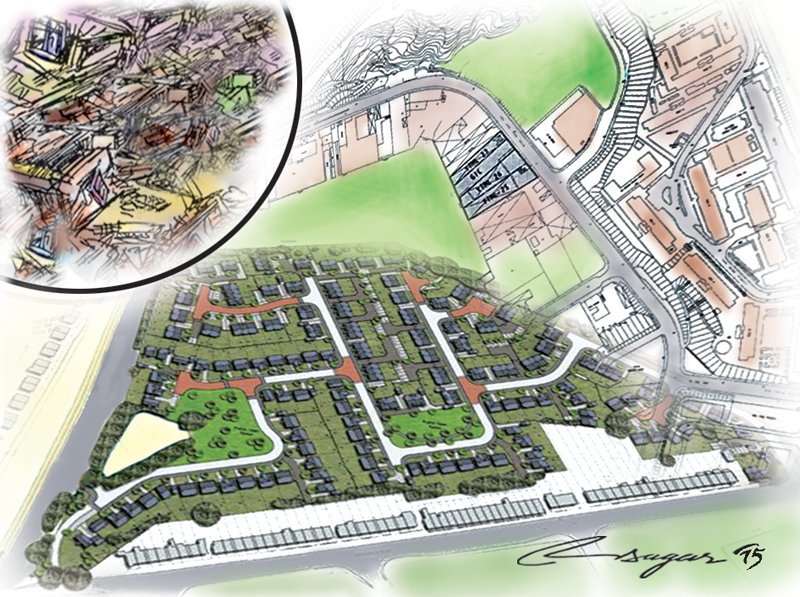The devastating earthquake
The government and its wings such as NPC, MoPIT, Finance, Urban Development, Ministry of Federal Affairs and Local Development, Information and Communication need to work in a coordinated manner
The earthquake of April 2015 followed by several hundred aftershocks witnessed at least three million people homeless, 22,500 injured and 9,000 killed. Considering the big earthquake of 1934 and now in 2015, Nepal lying in the Seismic Zone and Kathmandu becoming already the epicenter, is not free from devastating quakes in future. Disproportionate investments in the already congested Kathmandu by the public and private sector establishments need a second thought or judicious decision. Any unwarranted investments on construction and reconstruction activities in Kathmandu should be diversified geographically in time, consistent with the national aspiration of equity and a spacious, modern and beautiful capital valley where ancient monumental shrines and cultural and historical heritage are also conserved.
Of the Central Development Region’s population of an estimated 10 million, Kathmandu Valley alone with a small area of 360 square kilometers has three million residents which has increased almost three-fold in less than 10 years. Kathmandu has exceeded its carrying capacity given its high population density and limited land size. The horrific quake experience has also suggested we rectify the disproportionate spread of population and modern metropolitan facilities.
The mushrooming numbers of private and government offices and buildings, multistory apartments, malls, hotels and restaurants, hospitals and private health clinics, nursing homes and medical colleges have led to forced migration of people from all over the country to Kathmandu. It is ridiculous that the government has not been paying any heed to diversification of these establishments and facilities so far.
The ensuing effect has been also the exodus of the bulk of the economically active residents of 75 districts, more than 1000 per day, to the Gulf, India and overseas countries leading to a downturn in agricultural and industrial production. Trade deficit has increased by seven-fold in less than 10 years. Asymmetrically, most of the bureaucrats, planners, medical doctors, engineers, legal professionals, quality teachers, professors, PhD degree holders, political leaders and their party cadres are brain-drained and mostly confined to Kathmandu, aggravating regional disparities of underdevelopment.
Contrarily, Kathmandu already has acute shortage of essential public utilities and services such as drinking water, electricity, green parks and sewerage. Increase in the number of automobiles and vehicles and hence congestion, mismanagement of millions of tons of garbage and wastes, and the vehicular toxic emission and industrial ef fluence into holy rivers have led to awful lives for the people.
Donors have generously pledged US $ 4.4 billion - 66% of Nepal’s total reconstruction and recovery needs of US $ 6.7 billion in the International Conference on Nepal’s Reconstruction 2015 (ICNR) participated in by delegates of 60 countries and agencies. The Post Disaster Need Assessment (PDNA ) report of the National Planning Commission (NPC) needs to be intelligently considered geographically diversifying/expanding Kathmandu while planning reconstruction, displacing/relocating several of the government and private office buildings and facilities, including trade, commerce and manufacturing units to distant locations.
India, Japan and China and multilateral donors such as ADB and World Bank already share their commonalities in their priority spending on public buildings, hospitals, roads, transport, public facilities, and power. Apparently, they should also prioritize their post-quake funding and investment to also satisfy the need for geographically diversifying Kathmandu to more spacious districts in proximity such as Chitwan, Bara and Nawalparasi. To enable this process, Kathmandu-Hetauda and Kathmandu-Nijgadh fast track roads and a second International Airport at Nijgadh and, not the least, railways linking these districts should also be completed simultaneously. Increased funding including technical expertise by donors is also needed to accomplish all these. Given the urgency of implementation of reconstruction and relocation plans, the government may also resort to donor-led construction projects. The coalition government and its development wings such as NPC and Ministry for Physical Infrastructure and Transport, Finance, Urban Development, Ministry of Federal Affairs and Local Development, Information and Communication need to work diligently in a coordinated manner.
Post quake rehabilitation and reconstruction works for a new Nepal have not started yet. Ironically, heavy under-spending of the annual development budget of less than 40%, in completion of the Melamchi Drinking Water Project started in 2001, and the government’s incapacity to identify and submit hydro-power projects for which the Indian Prime Minister Narendra Modi had pledged a US $ 1 billion soft loan during his official visit are only a few bad examples; the others being sluggish and ineffective bureaucracy, lack of aid effectiveness, power politics leading to unstable government, dissolution of local elected government, lack of good governance, corruption, and cost and time overruns in infrastructure projects.
The writer is a Grants Business and Development professional






